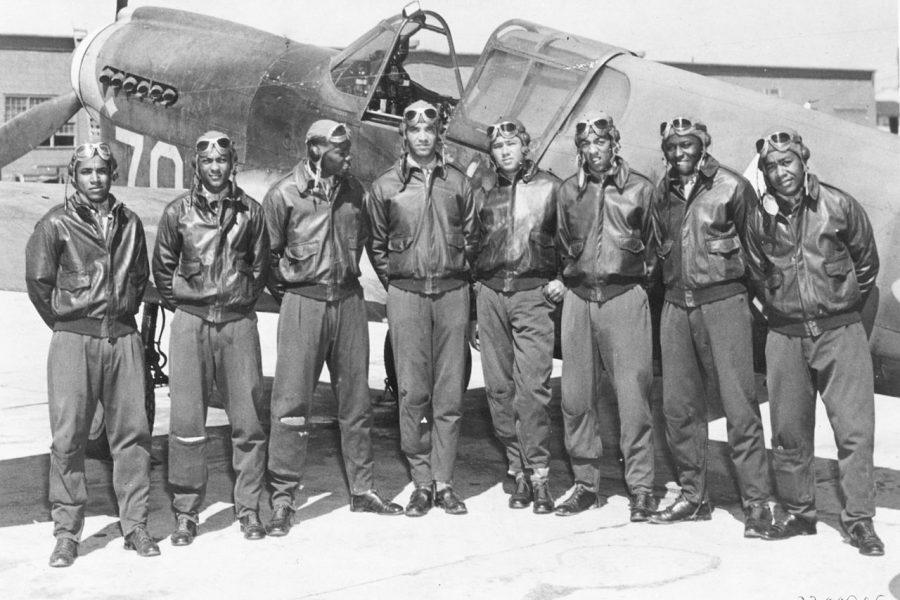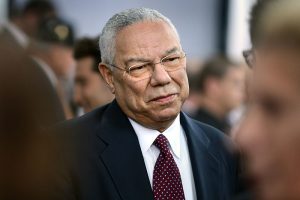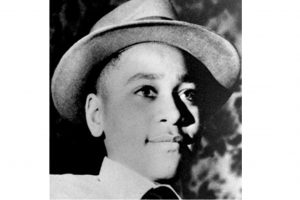The Tuskegee Airmen fought courageously despite discrimination
IMAGE / Wikimedia Commons
The Tuskegee Airmen pose in front of one of their fighter aircraft in this photo from 1942 or 1943.
During the Second World War, over 16 million Americans served in the Armed Forces, including 1.2 million black Americans.
However, during WWII, the military was segregated — black troops were not allowed to serve alongside white troops.
One of these segregated units was the 332nd Fighter Group, better known as the Tuskegee Airmen.
The Tuskegee Airmen were first constituted on July 4, 1942, and activated in October of that same year. They were the first black American servicemen to serve as aviators in the Army Air Corps.
The Tuskegee Airmen’s main role was to help protect Allied bombers as they bombed cities and industrial centers in Nazi Germany.
The workhorse of the American bomber squadrons, the B-17 “Flying Fortress,” was a large and slow-moving target with minimal protection against Nazi fighter planes like the Messerschmitt Bf-109 and the Focke-Wulf Fw 190.
Without protection from American fighter planes, bombers were subject to heavy losses as they went on missions over Germany.
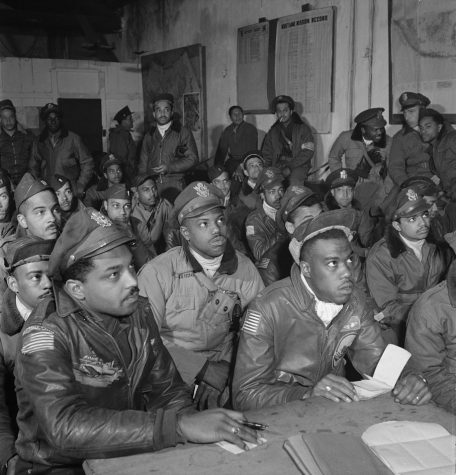
Members of the Tuskegee Airmen listen during a briefing.
Fighter groups made up of American airplanes like the P-51 “Mustang” and the P-38 “Lightning” were made in order to combat Nazi airplanes. However, for the most part, only white men were allowed to be pilots, a rule set in place during World War I.
Mr. Rob Markwardt, world history teacher, commented on the racism of American military policies.
“Back then, the military officers in charge were white and believed that the black man was inferior,” Markwardt said. “They thought if black soldiers were given guns and airplanes they would develop a taste for killing white men and subsequently come home and kill white Americans.”
However, this racist way of thinking did not stop American military officers from forming units of black airmen and soldiers during the Second World War. Even still, black Americans were still believed to be inferior to white troops.
Even famous generals like George S. Patton believed that black troops were inferior.
In the book “War As I Knew It,” Patton made a comment about the 761st Tank Battalion, an armored unit made up of black tankers.
“Individually they were good soldiers,” Patton said. “But I expressed my belief at the time, and have never found the necessity of changing it, that a colored soldier cannot think fast enough to fight in armor.”
However, units like the 761st Tank Battalion and the Tuskegee Airmen were able to help change that perception.
The Tuskegee Airmen lost very few bombers while providing cover for them. During the six-month period between September 1944 and March 1945, no bombers were lost while being covered by Tuskegee Airmen.
Only 27 bombers were lost by the Tuskegee Airmen during WWII, compared to an average of 46 bombers among other fighter groups. The Tuskegee Airmen also shot down 261 enemy aircraft during the war.
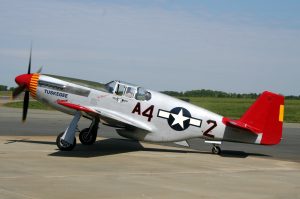
The “Red Tail” P-51 fighter was flown by the Tuskegee Airmen during WWII.
Because of this, bomber crews began to feel a sense of safety whenever they would see the Tuskegee Airmen’s airplanes, designated by their red markings on the tails and nose caps of their P-51s.
The pilots became known as the “Redtails” because of these markings.
By the end of the war, members of the unit earned a total of 95 Distinguished Service Flying Crosses, 14 bronze stars, 744 air medals, and eight Purple Hearts. The unit also received a Distinguished Unit Citation.
Eighty-four pilots in the unit were killed in combat or accidents.
In 1948, President Harry Truman desegregated the U.S. military. Black troops were granted the right to fight in the same units alongside white troops, not in separate units like in previous wars.
Without the accomplishments of the Tuskegee Airmen and other black units during WWII, desegregation, and possibly the Civil Rights Movement of the 1960s would probably have come at a slower rate, keeping many black Americans trapped behind social standards.

Senior
Birthday: April 8, 1999
Extracurricular activities: Robotics, quiz bowl
Hobbies: WWI, WWII, and Civil War reenacting; marching band
...

